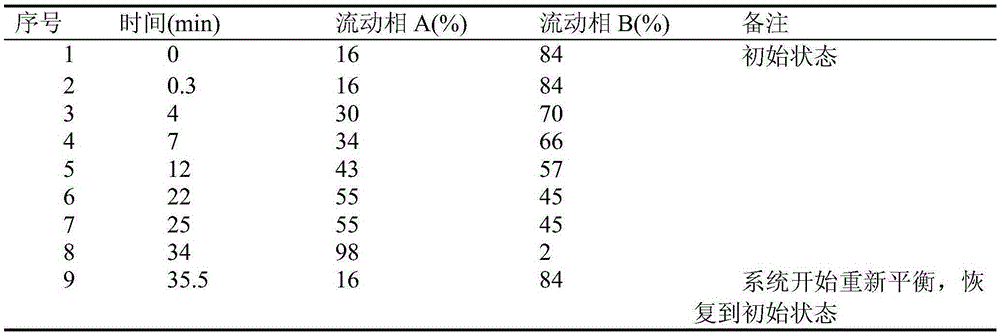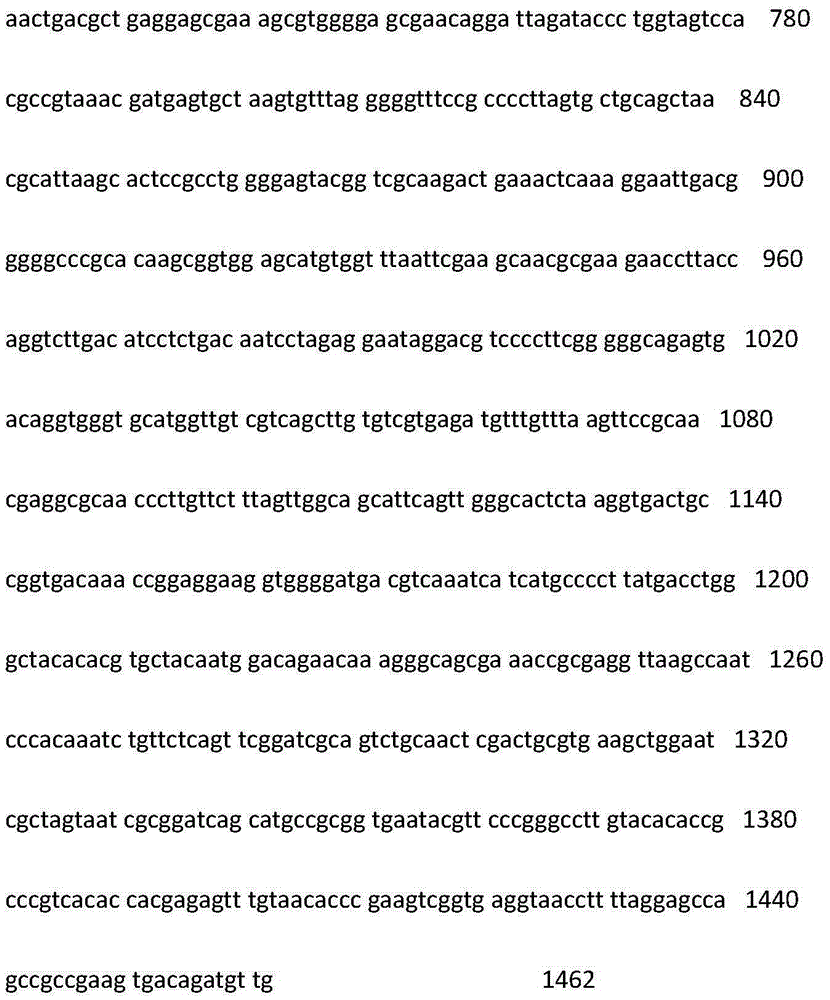Strain capable of highly producing aspartate decarboxylase and method for producing alanine
An aspartic acid and decarboxylase technology, applied in the biological field, can solve problems such as low enzyme activity, achieve high enzyme activity, be beneficial to extraction and separation operations, and broaden the channels of strains.
- Summary
- Abstract
- Description
- Claims
- Application Information
AI Technical Summary
Problems solved by technology
Method used
Image
Examples
Embodiment 1
[0018] Example 1: Classification of Bacillus tequila strains
[0019] 1) Characteristics of strains
[0020] exist preservation The colonies on the culture medium are milky white, nearly round, dry on the surface, opaque, wrinkled, dull, with irregular lobes at the edges, easy to pick; observed through a microscope, the bacteria are rod-shaped, single and not in chains, Gram Positive, after 48 hours of culture, it was observed that the spores were attached to the side of the bacterium or existed freely, without swelling, oval or columnar.
[0021] 2) Strain identification
[0022] The length of the 16SrDNA gene sequence obtained by DNA extraction, PCR amplification and sequencing is 1459bp, and the BLAST comparison on GenBank shows that the strain has a base similarity of 99% to Bacillus tequilensis (JX412373), and the sequence information as follows:
[0023]tggctttgcgcttgctatacatgcaagtcgagcggacagatgggagcttgctccctgatgttagcggcggacgggtgagtaacacgtgggtaacctgcctgtaagactgggataa...
Embodiment 2
[0027] 1) Strain activation: pick the strain to solid preservation Medium: yeast extract powder 5g / L, peptone 10g / L, NaCl 5g / L, agar 20g / L, pH 7.0, inoculate in a constant temperature incubator at 30°C for 20h;
[0028] 2) Preparation of liquid seeds: Pick 1 ring of activated strains and inoculate them in a 500ml Erlenmeyer flask containing 50ml of seed medium. The components of liquid seed medium: yeast extract powder 5g / L, peptone 10g / L, NaCl 5g / L, pH7 .0, sealed with eight layers of gauze, and cultivated at 30°C and 200r / min shaking table for 18h to obtain liquid seeds;
[0029] 3) liquid fermentation: according to 5% inoculum size, the components are glucose 20g / L, peptone 20g / L, aspartic acid 2g / L, MgSO 4 0.2g / L, KH 2 PO 4 0.5g / L, ammonium sulfate 3g / L fermentation medium was inserted into liquid seeds, the rotation speed was 200-700r / min, the dissolved oxygen was controlled at 20-30%, pH 7.0, temperature 30°C, aerated for 24 hours, and L-days were obtained. Fermentat...
Embodiment 3
[0034] 1) Strain activation: pick the strain to solid preservation Medium: yeast extract powder 5g / L, peptone 10g / L, NaCl 5g / L, agar 20g / L, pH 7.0, inoculate in a constant temperature incubator at 30°C for 20h;
[0035] 2) Preparation of liquid seeds: Pick 1 ring of activated strains and inoculate them in a 500ml Erlenmeyer flask containing 50ml of seed medium. The components of liquid seed medium: yeast extract powder 5g / L, peptone 10g / L, NaCl 5g / L, pH7 .0. Eight layers of gauze were sealed, and cultured at 30°C and shaken at 200r / min for 18 hours to obtain liquid seeds;
[0036] 3) Liquid fermentation: according to 7% inoculum size, the components are glucose 20g / L, peptone 20g / L, aspartic acid 2g / L, MgSO 4 0.2g / L, KH 2 PO 4 0.5g / L, ammonium sulfate 3g / L fermentation medium was inserted into liquid seeds, the rotation speed was 200-700r / min, dissolved oxygen was controlled at 25-30%, pH 7.0, temperature 30°C, aerated for 28 hours, and L-days were obtained. Fermentation ...
PUM
 Login to View More
Login to View More Abstract
Description
Claims
Application Information
 Login to View More
Login to View More - R&D
- Intellectual Property
- Life Sciences
- Materials
- Tech Scout
- Unparalleled Data Quality
- Higher Quality Content
- 60% Fewer Hallucinations
Browse by: Latest US Patents, China's latest patents, Technical Efficacy Thesaurus, Application Domain, Technology Topic, Popular Technical Reports.
© 2025 PatSnap. All rights reserved.Legal|Privacy policy|Modern Slavery Act Transparency Statement|Sitemap|About US| Contact US: help@patsnap.com



